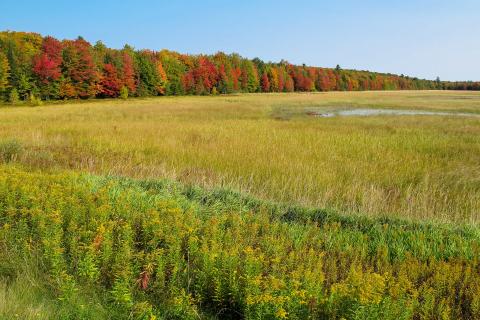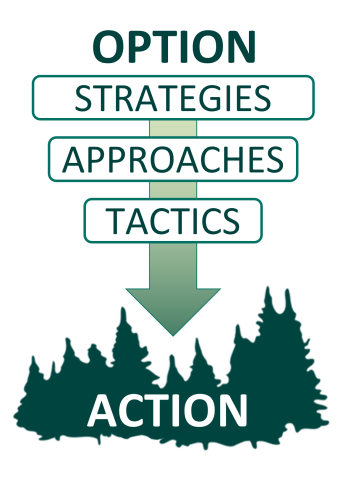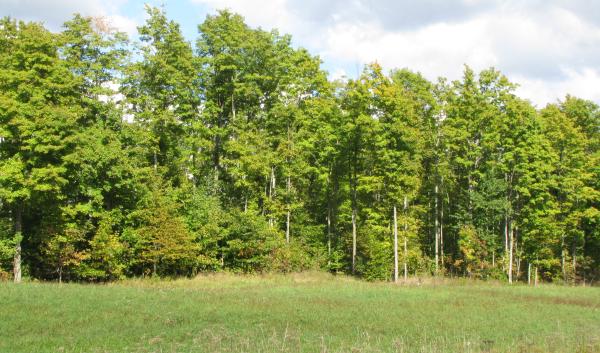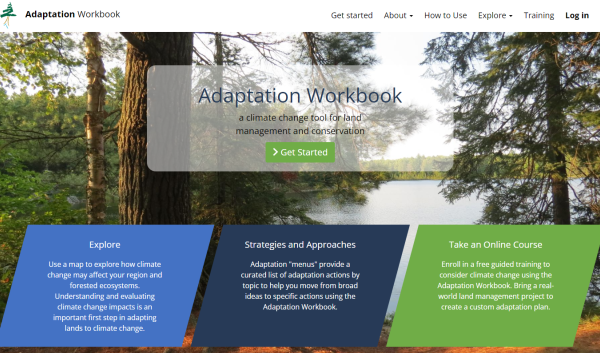Non-forested wetlands are important habitats that can also help reduce climate change impacts within watersheds.
In a collaborative effort to advance climate adaptation resources available to wetland practitioners, the Wisconsin Initiative on Climate Change Impacts Plants and Natural Communities Working Group and the Northern Institute of Applied Climate Science have partnered to create adaptation resources for non-forested wetland management. This effort is also supported by the USDA Northern Forests Climate Hub. This publication provides perspectives, information, resources, and tools to wetland managers and natural resource professionals in the Midwest and Northeast regions of the United States as they endeavor to adapt natural communities and ecosystems to the anticipated effects of climate change.
Effects from Climate Change
Wetlands are natural ecosystems that are inherently vulnerable to climate change impacts. The vulnerability of a wetland to regional climate changes is influenced by local characteristics such as soils, topography, location in the watershed, current and past land uses. Climate change will not affect all parts of a watershed in the same way. A changing climate can intensify existing stressors to wetland ecosystems and bring about changes that can affect water quality and habitats. For instance, extreme precipitation events can trigger erosion, sedimentation, and nutrient runoff to wetlands. These events can degrade water quality, and fuel the transportation and growth of non-native invasive plants and weedy native species. The use of climate vulnerability assessments for natural communities can help managers characterize and assess site risks.

Adaptation in Action
In this publication, we identify potential strategies and approaches that facilitate climate adaptation while meeting wetland conservation or restoration management goals and objectives. Adaptation strategies and approaches are intended to build upon current management actions that work to sustain ecosystems over the long term and support site goals while also adjusting systems to changing conditions. While it is beyond the scope of this publication to comprehensively address all potential adaptation tactics applicable to the conservation of wetlands, we provide examples to guide thinking, recognizing that individual wetland management projects have unique goals. Wetland professionals, reliant on their expertise and judgement, can use the adaptation strategies and approaches presented in this document to develop custom adaptation tactics based on the local conditions.
The non-forested wetland menu is designed to be used as a stand-alone resource, and it can also be used to supplement structured adaptation planning with the Adaptation Workbook process (published in Forest Adaptation Resources: Climate Change Tools and Approaches for Land Managers).

Strategies and approaches
The 6 strategies, 21 approaches, and 100+ tactics were developed through an assessment of existing adaptation tools, focus group discussions, and workshops with natural resource professionals.
Adaptation strategies are very general and can be applied in many ways across different ecosystems and cultural contexts. Adaptation approaches are more specific, describing in greater detail how strategies could be put into practice.
These strategies and approaches are designed to serve as stepping stones to allow natural resource managers and planners to translate broad concepts into targeted and specific actions (tactics) for putting climate change adaptation into practice to achieve a specific management objective in a specific location.
Example tactics are provided in the menu as illustrations of a few of the possible actions that could implemented for climate adaptation.
Menu of Adaptation Strategies and Approaches Developed for Non-Forested Wetland Ecosystems
-
Approach 1.1: Maintain and facilitate infiltration and water storage within wetlands, adjacent uplands, and groundwater recharge areas.
Approach 1.2: Maintain and restore a natural hydrologic regime.
Approach 1.3: Restore stream channel processes and restore hydrologic function of waterways connected to wetlands.
-
Approach 2.1: Moderate surface water temperature increases.
Approach 2.2: Reduce soil erosion and sediment deposition.
Approach 2.3: Reduce loading and export of nutrients and other pollutants.
-
Approach 3.1: Maintain and restore wetland structure.
Approach 3.2: Maintain and enhance diversity of plant species and their life histories, ecological niches, morphologies, and phenologies.
Approach 3.3: Promote prescribed fire in fire-adapted wetlands.
Approach 3.4: Prevent invasive species establishment and limit their impacts where they already occur.
-
Approach 4.1: Favor and restore native species and genotypes that are expected to be adapted to future conditions.
Approach 4.2: Increase genetic diversity of seed mixes within appropriate seed transfer zones.
Approach 4.3: Move at-risk species to locations that are expected to provide more suitable habitat.
Approach 4.4: Adjust wetland and composition to meet functional values.
-
Approach 5.1: Manage systems to cope with decreased water levels and limited water availability.
Approach 5.2: Manage systems to cope with increased water abundance and higher water levels.
Approach 5.3: Design and manage enhanced and created wetlands to accommodate changes in hydrologic variability.
-
Approach 6.1: Reinforce infrastructure to meet expected conditions.
Approach 6.2: Reroute or relocate infrastructure, or use temporary structures.
Approach 6.3: Incorporate natural or low impact development into designs.
Approach 6.4: Remove infrastructure and readjust system.
Citation
Staffen, A., O’Connor, R., Johnson, S.E., Shannon, P.D., Kearns, K., Zine, M., Sheehan, M., Fleener, J., Panci, H., Volkening, A. 2019. Climate Adaptation Strategies and Approaches for Conservation and Management of Non-Forested Wetlands. Report NFCH-4. USDA Northern Forests Climate Hub. Houghton, MI: U.S. Department of Agriculture, Climate Hubs. 41 p.
Acknowledgments
This is a joint product of the USDA Northern Forests Climate Hub, the Wisconsin Initiative on Climate Change Impacts Plants and Natural Communities Working Group and the Northern Institute of Applied Climate Science, a collaborative, multi-institutional partnership led by the USDA Forest Service.



